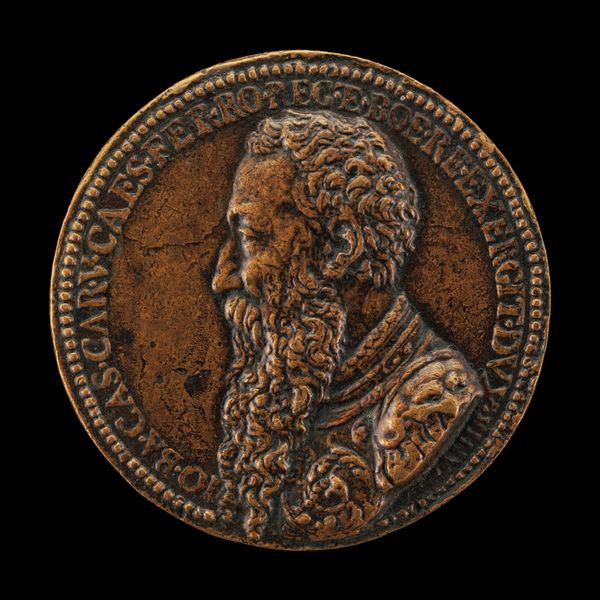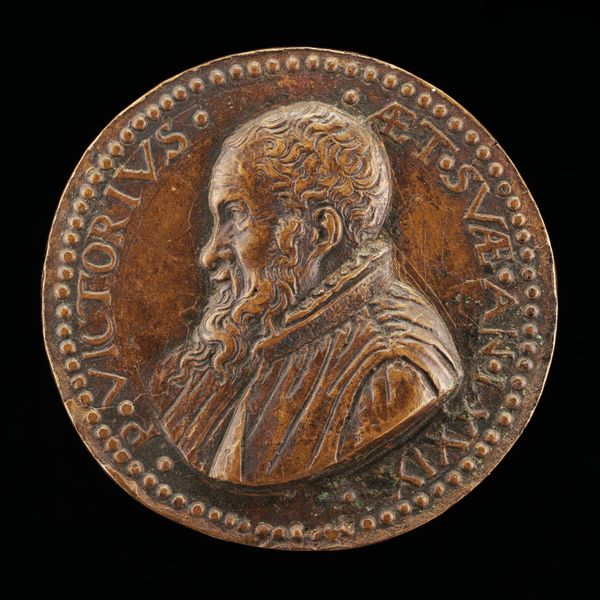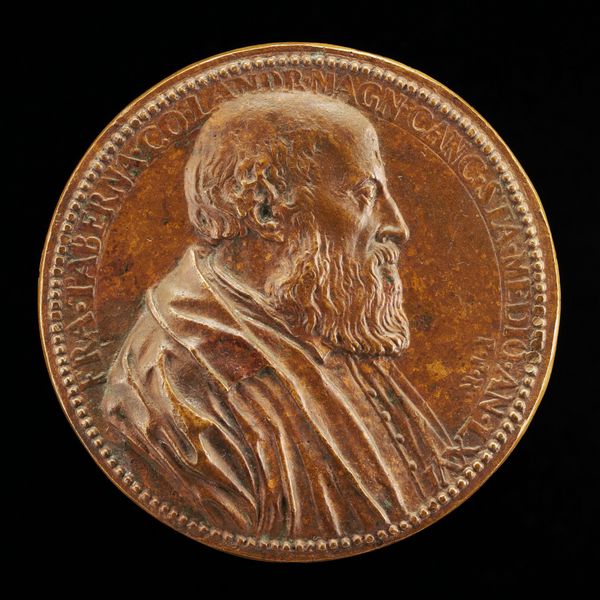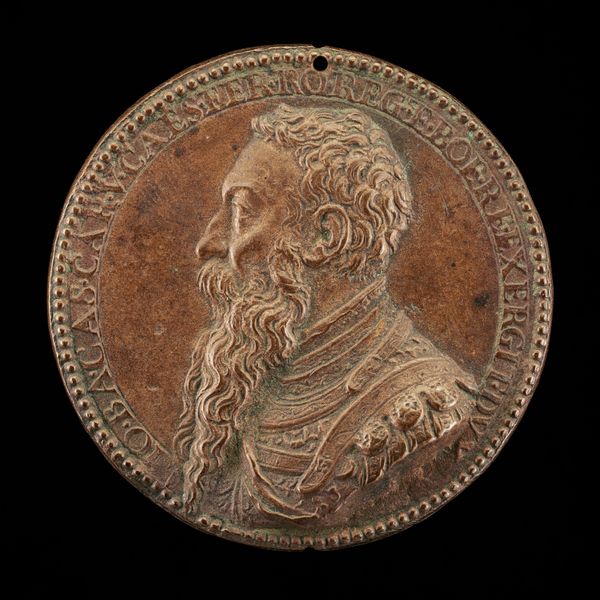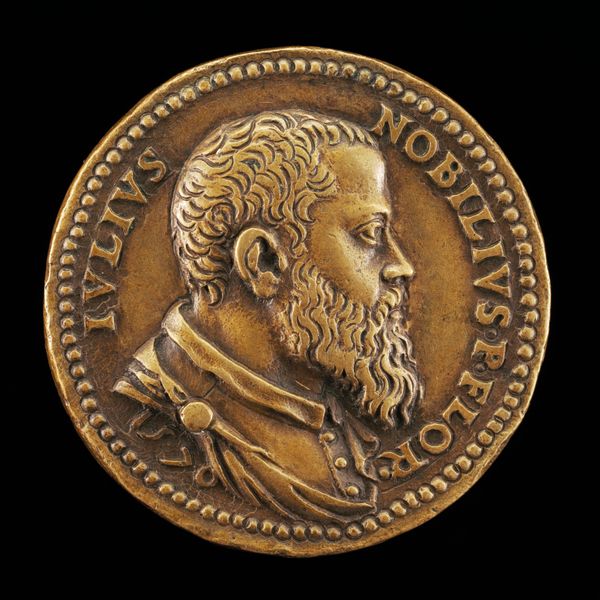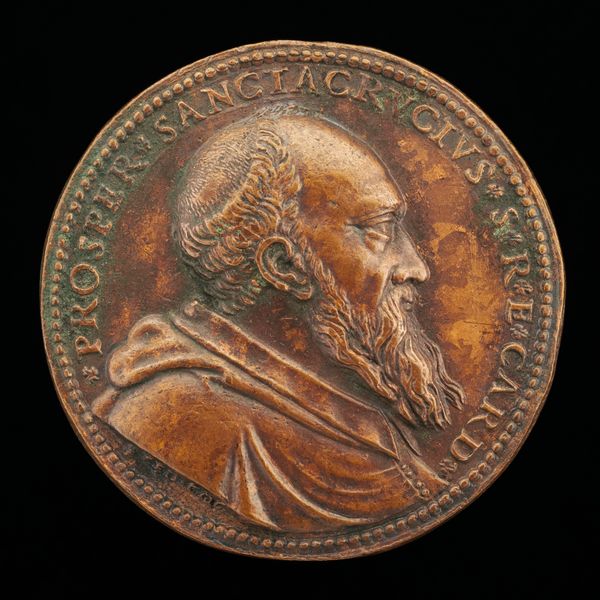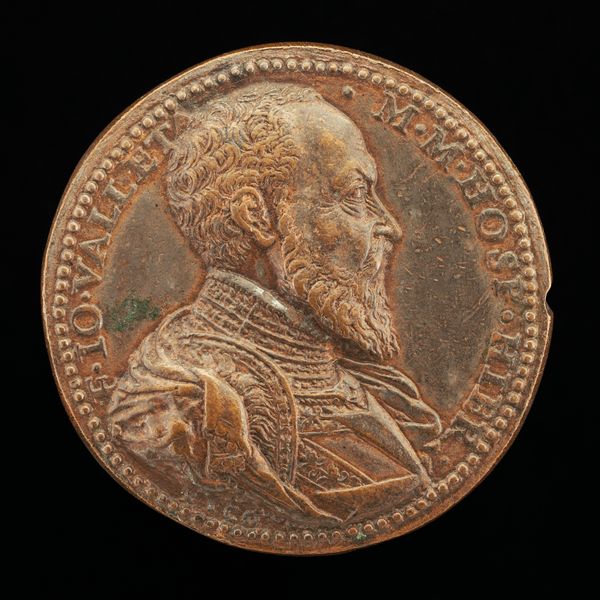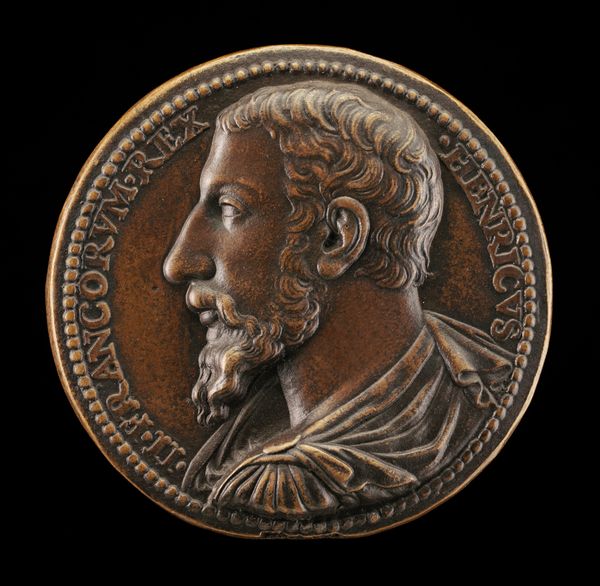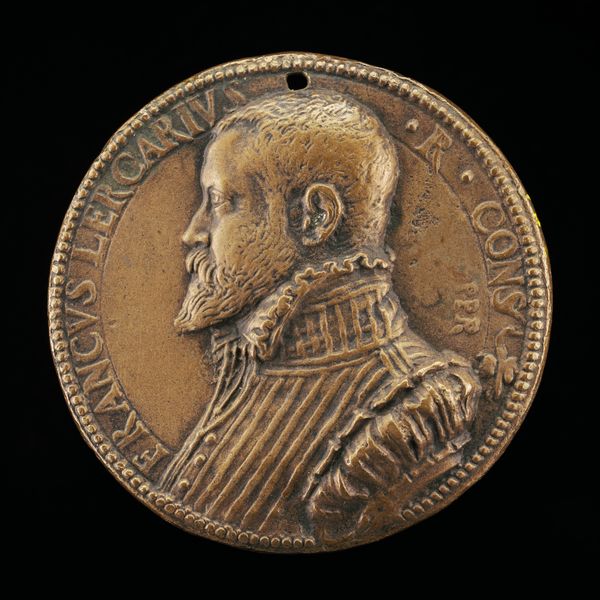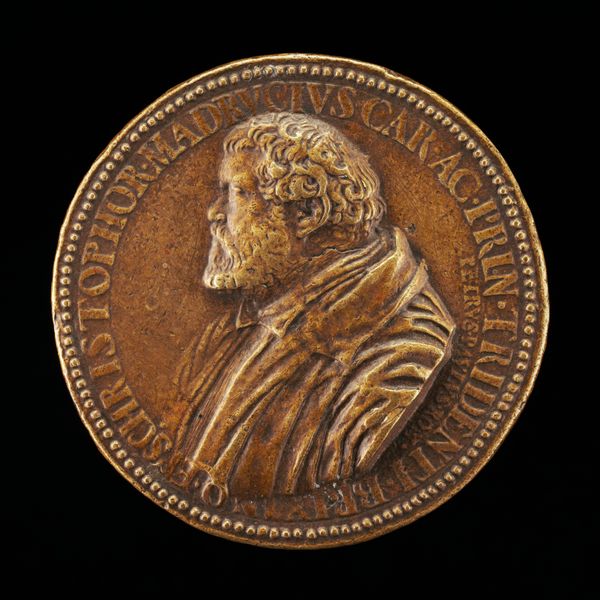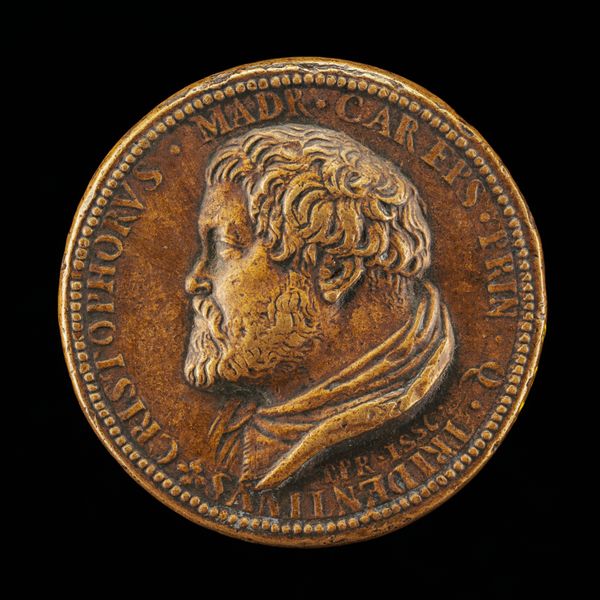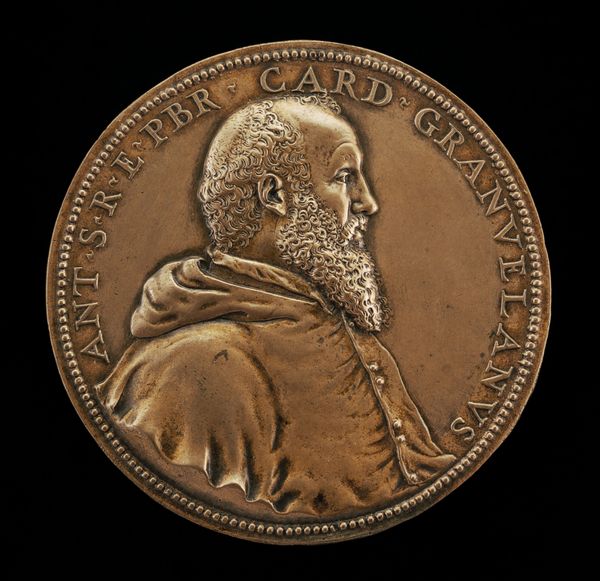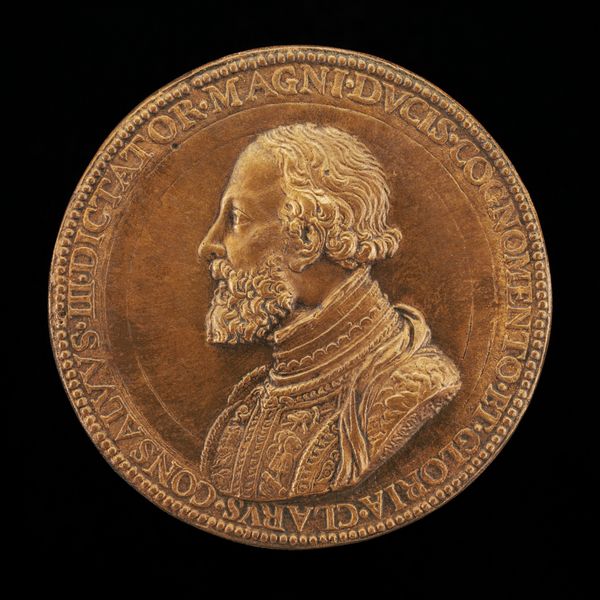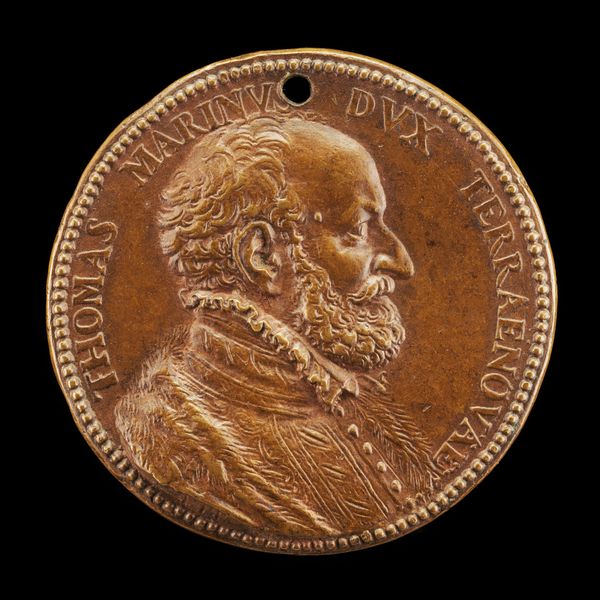![Jacopo de'Medici, 1497-1555, Marquess of Melegnano [obverse] by Pier Paolo Galeotti](/_next/image?url=https%3A%2F%2Fd2w8kbdekdi1gv.cloudfront.net%2FeyJidWNrZXQiOiAiYXJ0ZXJhLWltYWdlcy1idWNrZXQiLCAia2V5IjogImFydHdvcmtzL2FjNThjNmE0LWY5YTEtNDIwZS04Yjk0LTQ2MTM3YjBjZmZiNC9hYzU4YzZhNC1mOWExLTQyMGUtOGI5NC00NjEzN2IwY2ZmYjRfZnVsbC5qcGciLCAiZWRpdHMiOiB7InJlc2l6ZSI6IHsid2lkdGgiOiAxOTIwLCAiaGVpZ2h0IjogMTkyMCwgImZpdCI6ICJpbnNpZGUifX19&w=3840&q=75)
Jacopo de'Medici, 1497-1555, Marquess of Melegnano [obverse] 1552 - 1553
0:00
0:00
bronze, sculpture
#
portrait
#
medal
#
sculpture
#
bronze
#
11_renaissance
#
sculpture
#
italian-renaissance
Dimensions: overall (diameter): 5.61 cm (2 3/16 in.) gross weight: 56.95 gr (0.126 lb.)
Copyright: National Gallery of Art: CC0 1.0
Editor: Here we have Pier Paolo Galeotti's bronze medal depicting Jacopo de' Medici, Marquess of Melegnano, made between 1552 and 1553. The detail is amazing; you can almost feel the texture of his beard! What stands out to you? Curator: For me, it’s the bronze itself that speaks volumes. Its material reality transcends mere representation. Think about where that bronze came from, how it was mined, smelted, and cast. This object represents labor and resources extracted and transformed through human effort, reflecting complex economic systems and power structures of the Renaissance. Editor: I hadn’t considered that angle. It is cool how they used material to represent social class and power. Curator: Exactly! The medal's function is also key. This isn’t just art for art's sake. Who was the target audience, and how was it distributed? Was this used for propaganda, diplomatic gifts, or something else? Thinking about it this way reveals its deeper significance as an object circulating within a particular social sphere. Editor: That's fascinating! So it's not enough to just admire the aesthetic qualities; we also have to consider its life and the materials around it. Curator: Precisely. By focusing on the material conditions of its production and reception, we can gain a richer, more nuanced understanding of the object and its place in Renaissance society. Editor: Thanks, that really gives me a new perspective on how to analyze art. Now I'm seeing this work from a whole new angle. Curator: And hopefully you begin to look beyond what the artwork literally represents and towards its meaning through production!
Comments
No comments
Be the first to comment and join the conversation on the ultimate creative platform.
